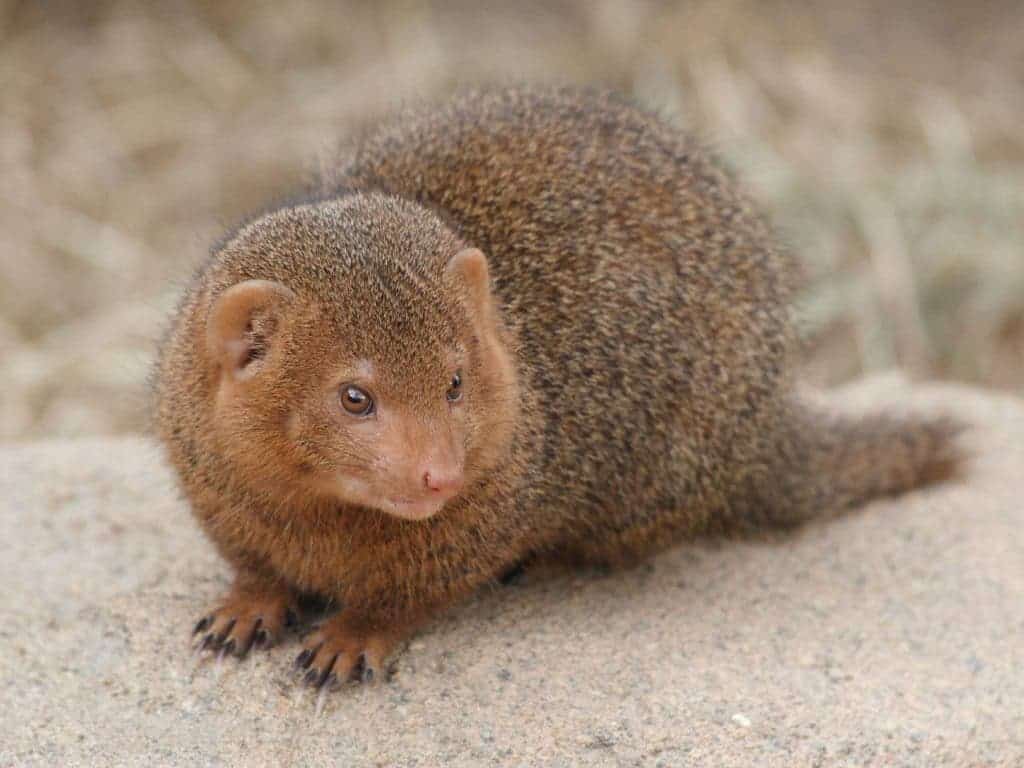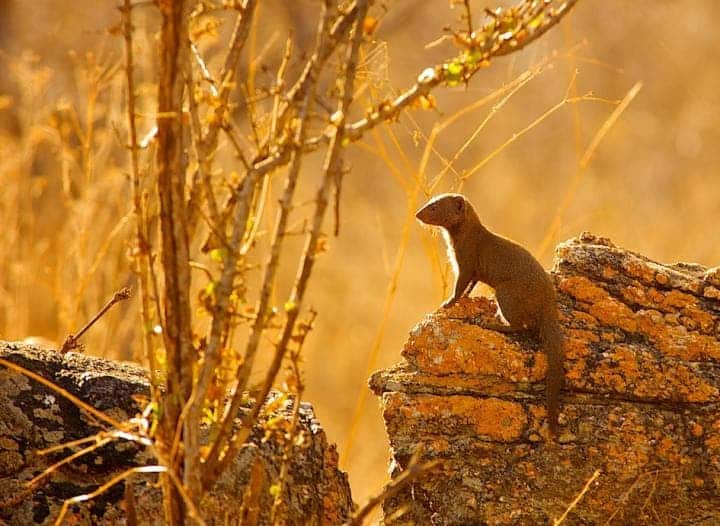It’s another one of those things that was once thought to be exclusively human but has since been shown to be present in the animal world: dwarf mongooses remember previous cooperative acts by their groupmates and reward them later, according to new work by University of Bristol researchers

Don’t let their cute fluffy appearance deceive you — the dwarf mongoose (Helogale parvula) is a predator. It’s Africa’s smallest predator, but still. They live in very social groups of up to 30 individuals, with a strict hierarchy among same-sexed animals within a group, headed by the dominant pair (normally the oldest group members). All group members cooperate in helping to rear the pups and in guarding the group against predators.
Dwarf mongooses also maintain an interesting mutually advantageous relationship with hornbills, in which hornbills seek out the mongooses in order for the two species to forage together more successfully, and to warn each other of nearby predators. So it shouldn’t surprise anyone, really, that the dwarf mongoose is a great communicator and a very social creature. But what did surprise biologists is that not only do these creatures remember when others help them — but they also reward their helper, even after a lot of time has passed. Senior author, Professor Andy Radford from Bristol’s School of Biological Sciences, said:
“Humans frequently trade goods and can track the amount they owe using memories of past exchanges. While nonhuman animals are also known to be capable of trading cooperative acts immediately for one another, more contentious is the possibility that there can be delayed rewards.”

Until now, this type of behavior has only in primate populations, and studies have generally focused on captive populations. Lead author, Dr. Julie Kern, also from Bristol, added:
“There have been hardly any suitable experimental tests on wild animals, especially non-primates. By working with groups of dwarf mongooses habituated to our close presence, we could collect detailed observations and conduct experimental manipulations in natural conditions.”
The study also revealed one of the first cross-commodity trading, whereby individuals reward one type of good or service with another. In this case, grooming was traded for sentinel behavior (depicted above), which involves adopting a high position and keeping a lookout for danger, warning groupmates with alarm calls if something’s wrong.
[Also Read: For banded mongooses, ‘cultural inheritance’ decides what’s for dinner]
Researchers had witnessed this type of behavior several times, but proving a cause-effect relationship was quite tricky, so researchers set up a creative experiment. Professor Radford explains:
“Over three-hour periods when groups were foraging, we simulated extra sentinel behaviour by a subordinate group member using playbacks of its surveillance calls–vocalisations given to announce it is performing this duty. At the sleeping burrow that evening, we monitored all grooming events, especially those received by the individual who had had their sentinel contribution upregulated.”
They found that on days when an individual was perceived to conduct more sentinel duty, it received more evening grooming from groupmates than on regular days (when its foraging calls had been played back during the preceding foraging session). Furthermore, they found that the grooming needn’t occur immediately — sometimes, it took a while before the reward came.
It might seem like the two services don’t quite match up, as being a sentinel seems much harder and more important than being a groomer, but grooming has long been considered an important tradable commodity in social species, being used as a reward or as a sign of affection in various contexts.
Journal Reference: ‘Experimental evidence for delayed contingent cooperation among wild dwarf mongooses’ by J.M. Kern and A.N. Radford in Proceedings of the National Academy of Sciences, USA.


